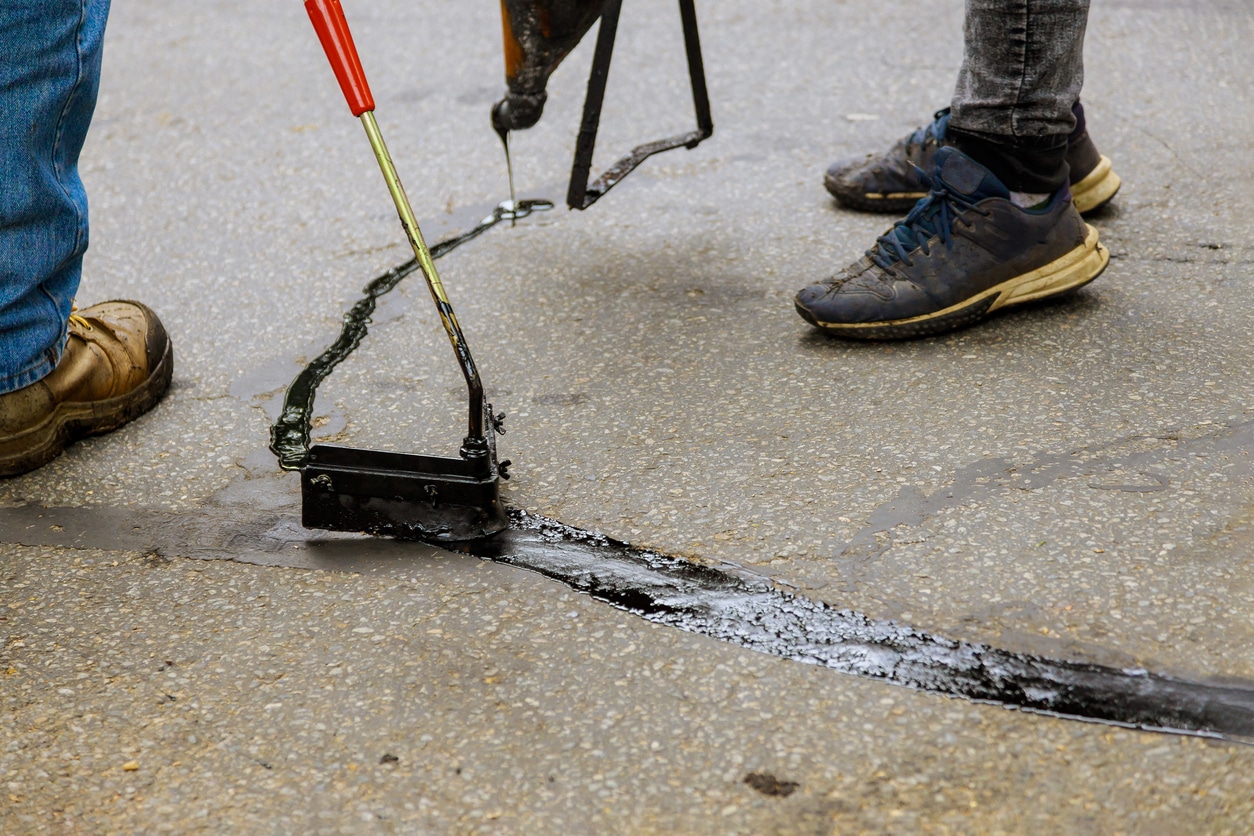Warm Mix Asphalt: A Lasting Service for Sidewalk
Warm Mix Asphalt (HMA) has actually arised as a leading lasting option for pavement services, providing a myriad of environmental benefits and innovative technologies. Its capacity to reuse products and minimize power intake provides an engaging situation for its adoption in roadway construction tasks. In addition, the lasting efficiency and resilience of HMA make it a favored option for infrastructure growth. As the demand for environment-friendly building practices expands, checking out the subtleties of HMA's sustainability can provide beneficial insights into the future of sidewalk solutions.
Environmental Advantages of Hot Mix Asphalt

Furthermore, Warm Mix Asphalt aids to alleviate metropolitan heat island impacts. Its dark shade absorbs sunshine, minimizing the amount of warm mirrored back into the ambience compared to lighter-colored sidewalks. This can lower ambient temperature levels in urban areas, lowering the need for cooling and eventually lowering power intake.
In addition, Warm Mix Asphalt adds to improved stormwater monitoring. Its permeable nature permits water to infiltrate the pavement and recharge groundwater supplies, reducing runoff and the danger of flooding. These ecological advantages make Warm Mix Asphalt a lasting selection for leading highways and roads.
Energy Efficiency in HMA Production
Is energy efficiency a critical variable in the manufacturing of Warm Mix Asphalt (HMA)? Energy plays a significant duty in the manufacturing of HMA, impacting both price and environmental sustainability. One crucial aspect of power effectiveness in HMA production is the usage of cozy mix asphalt (WMA) innovations.
Additionally, improvements in plant innovations have actually led to more energy-efficient HMA production procedures. By maximizing energy use in HMA manufacturing, the industry can minimize its carbon impact while maintaining top notch pavement materials.
Recyclability of Warm Mix Asphalt
The recyclability of Warm Mix Asphalt (HMA) is a critical element of its sustainability and long-lasting ecological influence. HMA is one of the most recycled materials in the United States, with over 100 million lots of reclaimed asphalt pavement (RAP) being reused every year in brand-new pavement building. Reusing HMA supplies numerous environmental benefits, such as minimizing the demand for virgin materials, lowering energy consumption during manufacturing, and decreasing the amount of waste sent out to land fills.
The process of recycling HMA entails crushing the existing sidewalk, squashing it into smaller sized items, and mixing it with new aggregate and asphalt binder to develop a recycled mix. Generally, the recyclability of HMA plays a considerable role in advertising lasting techniques within the pavement market.

Long-Term Efficiency of HMA
Asphalt sidewalks show resilience and durability over an extensive period, reflecting the long-term performance of Hot Mix Asphalt (HMA) The longevity of HMA can be associated to its capability to stand up to rush hour tons, extreme climate condition, and the effects of aging. Studies have revealed that properly designed and effectively created HMA sidewalks can last for two decades or even more with routine maintenance. The key to optimizing the lasting efficiency of HMA hinges on utilizing top quality materials, adhering to best practices in building and construction, and applying efficient maintenance strategies. Correct water drainage, routine evaluations, and timely repairs are essential for preserving the architectural stability of HMA pavements with time. Furthermore, developments in HMA innovation, such as making use of polymer-modified binders and cozy mix asphalt, have actually further boosted the toughness and durability of HMA pavements. By focusing on high quality construction and upkeep practices, HMA remains to verify itself as a sustainable and cost-efficient option for long-lasting sidewalk infrastructure.

HMA: Durability and Sustainability
Showing both toughness and sustainability, Warm Mix Asphalt (HMA) has come to be a foundation in the construction of resilient pavement infrastructures - hot mix asphalt. HMA's toughness stems from its capacity to endure hefty loads, harsh climate conditions, and high website traffic volumes, making it a trusted option for highways, highways, and airport terminal runways. The structure of HMA, which generally consists of accumulations, binder, and filler, plays an important duty in improving its long life and resistance to tear and put on
Moreover, HMA's sustainability depends on its recyclability and energy-efficient manufacturing procedure. The ability to reuse redeemed asphalt sidewalk (RAP) in new HMA mixes lowers the demand for virgin products and decreases the environmental effect of see it here sidewalk building and construction and maintenance. Furthermore, the power efficiency of producing HMA depends on its reduced blending temperature levels compared to other pavement materials, causing lowered energy consumption and greenhouse gas emissions.
Verdict
In verdict, warm mix asphalt (HMA) supplies a lasting solution for pavement with its eco-friendly attributes. HMA's recyclability, power effectiveness in manufacturing, and long-lasting durability make it an environmentally friendly option for road building. By preserving all-natural sources, reducing waste, and lowering greenhouse gas emissions, HMA plays an important function in promoting sustainability in infrastructure development. Its ability to mitigate urban warmth island results better highlights its value in developing environmentally conscious and resistant sidewalk systems.
HMA is one of the most recycled products in the United States, with over 100 million loads of reclaimed asphalt sidewalk (RAP) being reused each year in brand-new sidewalk construction.The procedure of recycling HMA entails grating visit this site right here the existing pavement, squashing it into smaller sized pieces, and blending it with new accumulation their website and asphalt binder to produce a recycled mix.Asphalt pavements show toughness and durability over an extensive period, mirroring the long-lasting efficiency of Warm Mix Asphalt (HMA) Furthermore, improvements in HMA innovation, such as the usage of polymer-modified binders and warm mix asphalt, have actually even more enhanced the sturdiness and longevity of HMA pavements. The capacity to reuse recovered asphalt sidewalk (RAP) in new HMA combinations decreases the need for virgin products and reduces the ecological impact of sidewalk construction and upkeep.